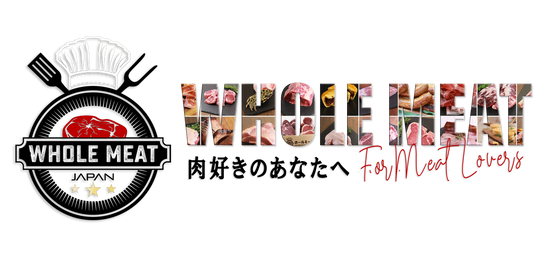最高のステーキの種類、特徴、およびカット方法!
最高のステーキの種類、特徴、切り方
ステーキ!それは、多くの男性にとって、大好物であり、レストランでのご馳走であり、家庭料理のレパートリーにおいても、自慢の一品である。様々な国や文化の中で重要な食べ物であるため、あらゆる料理屋でいかに肉ステーキを完璧に仕上げることに専念しており、ステーキの完璧な種類の定義については熱い議論が交わされている。
ステーキはほんの少しの味付けと火加減が必要な、見かけによらずシンプルな料理だが、焼いたり、炙ったり、注文したりする前にステーキについて知っておくべきことはたくさんある。そこでこの記事では、ステーキとは何か、良質なステーキの特徴、そして購入する際の最高のカットについて説明する。
改めまして、ステーキとは?
単純すぎる質問のように思えるかもしれないが、実は少し微妙なところがある。何しろ、どんな肉でも自動的にステーキとみなされるわけではない。具体的な定義としては、「筋繊維に対して垂直にスライスされた肉(通常は牛肉)」ということが挙げられる。この定義はその他の肉類にも適用できるが、この記事では特に西洋文化の主食である牛肉ステーキに的を絞る。
ステーキの論争
具体的な内容を述べる前に、いくつか重要な留意点がある。
・要するに、ステーキは美味しいが、牛肉には賛否両論ある。
・牛肉は高価で、資源を大量に消費し、環境を破壊する食品である。
・牛は必ずしも人道的な環境で飼育されているとは限らず、動物への抗生物質の使用は抗生物質耐性の増加に関係している。
・牛肉は健康食品ではない。実際、世界保健機関(WHO)は、赤身肉の定期的な摂取はガンのリスクを高めると結論づけている。
赤身肉を健康的なものとして捉え直そうとする試みは数多くなされてきたが(「パレオダイエット(paleo diet)」や牧草で育てた牛肉を食べることの提唱など)、単にそうではないのだ。結局のところ、赤身肉を摂取するかどうか、あるいはどのように摂取するかは、誰もが自分で選択しなければならない。
美味しいステーキの特徴
さて、必要な免責事項を説明したところで、美味しいステーキの特徴について話を戻そう。全体として、ステーキには柔らかさと風味という2つの重要な特徴がある。
ステーキを柔らかくする要素は何か?
ステーキを「柔らかくする」ことは、よく検索されるトピックである。柔らかいステーキは噛みやすく、楽しい。美味しいステーキのイメージに、革を噛んでいるような食体験は含まれていないはずだ!というのも、ステーキの柔らかさに関しては、どのステーキも同じではないからだ。
柔らかさについて考える場合、ステーキ自体の特徴に注目し、調理法については後回しにしておこう(つまり、この記事の第2回目)。柔らかさについて考慮すべき点は2つある:
筋肉の使用量
人間が筋肉を使う度合いが違うように、牛も同じである。牛が使う筋肉が少なければ少ないほど、肉は柔らかくなる。例えば、背骨に沿った筋肉(後述するステーキの多くの種類にカットされる)は、腰や肩(チャックのような安価なカット肉になる)よりも使われる量が少ない。ステーキの筋肉、 コラーゲン、脂肪の比率
筋肉、コラーゲン(筋肉をつなぎとめる結合組織の一種)、脂肪である。筋肉はステーキの主要物質であり、脂肪は風味を、コラーゲンは構造を提供する。調理中、結合組織は分解するのに十分な時間がないため、柔らかいタイプのステーキは結合組織が全体的に少ないはずである。霜降り状の脂肪は調理中に溶けるが、厚い脂肪のポケットは溶けないため、柔らかさが損なわれる。
和牛や神戸ビーフが高級とされるのはこのためだが、これらの牛肉については後述する。
ステーキを風味豊かにするものは何か?
ここでもう一度、調理中や調理前に加える調味料ではなく、ステーキそのものの味を考えてみよう。
風味に寄与する主な要素は、肉に含まれる脂肪の量、その動物の食性、肉の熟成方法である。
脂肪はステーキの主な旨味成分である。
・肉はほとんどが筋肉組織で構成されているため、水分を含んでいる。
・風味を運ぶ分子は水にはじかれるが、脂肪には溶ける。
・さらに、脂肪はステーキのジューシーさを増す。
動物の食餌も風味に影響する。
・穀物肥育牛
ほとんどの場合、穀物肥育牛は最初の6~12ヵ月間は放し飼いにされる。しかしその後、牛たちは牧草地ではなく、より集中した場所であるフィードロットに移動する。フィードロットでは、牛はトウモロコシや大豆などの穀物で急速に肥育される。牛によっては、より早く成長させるためにホルモン剤を投与されたり、集中的で時には不衛生な生活環境での生存率を高めるために抗生物質を投与されることもある。ご想像の通り、肉牛の非人道的な扱いを考えるとき、こうした肥育場とその環境は主な苦情のひとつである。
・牧草肥育牛
穀物肥育の牛とは異なり、牧草肥育の牛は屠畜場に送られるまでの間、放牧されることが多い。牧草肥育という言葉は法律で定義されているわけではないが、ベストプラクティスによれば、一般的に牛は主に牧草、干し草、低木を主食とする。これは牧草が穀物よりも栄養価が低いためである。また、放牧牛はよく動くため、肉が少し硬くなります。
・グレインフェッド(穀物肥育)は純粋に 「ビーフ 」と表示されることが多いが、グラスフェッド(牧草肥育)やグラスフィニッシュド(牧草仕上げ)は、両方の飼料の風味を併せ持つため、通常そのように表示される。
・米国農務省は牧草飼育牛肉の表示を規制していないので、目の肥えた買い物客は、肉屋や食料品店に問い合わせてみるとよいだろう。
・結局のところ、個人の好みの問題なので、あまり気にせず、好きなものを選んでほしい。味を重視するのであれば、伝統的な穀物肥育牛肉がベストだと思いますが、牧草肥育牛肉の味を好む人もいるでしょう。
一般的に、牛の特徴が肉の質に影響するため、ステーキの産地を知ることは常に重要であることを覚えておいてほしい。
最後に、肉の熟成方法も風味に影響する。
・簡単に言えば、熟成とは微生物と酵素が肉に作用して結合組織を破壊し、肉が柔らくなり、風味も増加する。
屠殺されたばかりの牛肉は味が濃いと思われがちだが、実はそうでもない!「新鮮な "牛肉は、結合組織がすべて残っているため、硬く、風味がない。一部の食料品店では「ノンエイジング」の牛肉を販売しているが、そのような牛肉は少なくとも数日間は熟成されている。さらに、この「ノンエイジング」は、単に低品質のステーキの特徴であり、その風味は、さらなる熟成によって恩恵を受けることはないだろう。
・乾燥熟成(ドライエージング)
伝統的なドライエイジング製法では、ステーキを約30日間吊るして熟成させる。さらに、肉の外表面にいる微生物が独特の香りと食感を生み出す。
今日、肉愛好家はウェットエイジングビーフよりも乾燥熟成ビーフを選ぶことが多い。一般的に、一般的な食料品店では乾燥熟成ビーフは扱っていないが、評判の良い肉屋では扱っていることが多い。さらに、一般的に乾燥熟成されるのは高級部位のみで、フラットアイアンやチャック、スカートステーキのような低品質部位は、風味が向上するどころか劣化してしまうからだ。
乾燥熟成はデリケートで高価なプロセスであり、肉は湿度の高い環境(35~38°F、1.5~3.5℃、湿度50~60%)で氷点下に近い温度で保存しなければならない。
適切なドライエイジングには2週間から6週間かかり、重量のおよそ3分の1以上が水分として失われる。
・ウェット・エージング
今の世の中、ほとんどの牛肉は、カットされた牛肉を真空状態にしてビニール袋に入れ、ウェットエイジングされる。
この製法は、肉の鮮度を長期間保つだけでなく、水分の損失を抑える(ステーキは重量で販売されるため、業者にとってはより高い価値を意味する)。
さらに、このプロセスはドライエイジングよりも短時間で済み(通常、最低でも4~10日間)、多くの消費者が好ましいと考える新鮮な肉の食欲をそそる赤色を保つのに役立つ。
水分が減ることで風味が増すことはすでに述べたとおりだが、だからといってウェットエイジングが必ずしも劣るというわけではない。ドライエイジングから始めて、ウェットエイジングに切り替える業者もいるほどだ。
結局のところ、私たちが提案するのは、自分で試してみること、そしてお気に入りが見つかったらメモを取ることだ。
ステーキの種類とカット
ステーキのカットには多くの種類がある。最も簡単に言えば、「カット」とは牛のどの部位からステーキが作られたかを指す。最も柔らかいのはロースと背骨周りのリブで、一般的に食感と風味が最も良いので、今日はこのカットに焦点を当てる。特におすすめのカットは以下の5つです。
・リブアイ
・テンダーロイン(フィレミニョン)
・ストリップ(ニューヨークストリップ)
・Tボーン&ポーターハウス
・トップサーロイン
これらのカットは、風味と柔らかさの最高の組み合わせを提供しますが、他のカット(フランクやフラットアイアンステーキなど)も楽しむことができます。しかし、これらの五つのカットが最も優れた食感と風味を提供するため、この記事ではそれらに焦点を当てます。
1.リブアイ
この部位は、牛の肋骨部分(上のインフォグラフィックをお忘れなく!)から切り出され、じっくりとローストされたプライムリブにも使われる。
デルモニコ・ステーキ、スコッチ・フィレ、アントルコートとも呼ばれる。
アメリカでは用語上の区別がある: 「リブロース」は骨を取り除いたものを指し、「リブ・ステーキ」は骨がついたままのものを指す。世界の他の地域では、これらの用語はほとんど互換性がある。
霜降りの脂身と高い柔らかさを持つリブロースの味は、他のどの肉にも引けを取らない。
2.テンダーロイン/フィレ
牛のロース部位の中央から切り出されるこの部位は、その名にふさわしく、牛の肉の中で最も柔らかい部位である。
フランスではフィレ、イギリスではフィレ、オセアニアのオーストラレーシア地域ではアイ・フィレとも呼ばれる。
テンダーロインの3つの主な「カット」は、(大きいものから順に)バット、センターカット、テールである。バット・カットは通常カルパッチョに、センター・カットは憧れのフィレ・ミニヨンやシャトーブリアンのようなポーション・コントロール・ステーキに、テール・カットはストロガノフのような小さな牛肉を使うレシピに適している。
・フィレ・ミニヨン(フランス語で「小さい」「可憐な」という意味)はセンター・カットの小さい方からスライスされ、シャトーブリアン(19世紀のフランス大使、フランソワ=ルネ・ド・シャトーブリアンにちなんで名付けられた)は大きい方からスライスされる。
シャトーブリアンには約2.5ポンド、フィレ・ミニヨンには約1ポンドが適している。テール部分の重さは、1ポンドの0.5からほとんどゼロまで様々だ。ご想像の通り、テンダーロインは重量で最も高価なカットである。
・リブロースやストリップよりも赤身が多いため、味よりも食感を好む人にはこのカットが適している。
同時に、リブロースやストリップほど風味が強くないため、テンダーロインはベーコンで巻いたり、ソースを添えたりして味を引き立てることが多い。
3. ストリップステーキ、別名ニューヨーク・ストリップ
・ニューヨーク・ストリップやカンザス・シティ・ストリップなど、さまざまな呼び名がある。
・短めのロースから作られるストリップは、結合組織が少なく(筋肉は牛のためにほとんど働いていない)、柔らかい牛肉となる。
・きめ細かな霜降りのおかげで風味がよく、一般的にはリブロースに次ぐおいしさだ。
・おまけに、ストリップ・ステーキは風味豊かなロースト・ビーフにも使える。
4. Tボーン&ポーターハウスステーキ
・Tボーンもポーターハウスカットも、牛の短いロース肉を使用している。
・ご想像の通り、Tボーンステーキは、それを支える独特の形の骨にちなんで名付けられた。少し紛らわしいが、ポーターハウス(この名前は、1800年代初頭にニューヨークでポーターハウスと呼ばれたレストラン、またはジョージア州にある同じ名前のホテルに由来する)もT字型の骨を持っている。しかし重要なのは、この2つのカットは同じではないということだ。
・Tボーンもポーターハウスも、T字型の骨を片側がテンダーロイン、もう片側がストリップで囲んでいるが、この2つのカットの違いは、それぞれの部位に含まれる肉の量にある。
・Tボーンもポーターハウスも、ストリップステーキの大部分を含む。ポーターハウスステーキはショートロインの後端からカットされるため、テンダーロインの部分が多く含まれる。逆に、Tボーンステーキはショートロインの前端に近い部分からカットされるため、テンダーロインの部分は少なくなります。
・米国農務省によれば、Tボーンには少なくとも0.25インチの厚さのテンダーロイン・フィレを使用しなければならないが、ポーターハウスには少なくとも1.25インチの厚さのフィレを使用しなければならない。その結果、多くのポーターハウスは2ポンド以上の重さになる。
・この方程式をさらに混乱させているのは、「ポーターハウス」という用語が米国以外でも異なる定義を持っていることだ。英国や英連邦諸国では、ポーターハウスとは英国産の骨付きサーロイン・ステーキ(つまり米国産のストリップ・ステーキ)のことで、テンダーロインは含まれていない。一方、ニュージーランドとオーストラリアでは、ポーターハウスは骨付きのストリップステーキを指す。
基本的に、Tボーンもポーターハウスもかなり大きめのカットなので、高価であり、仲間内でシェアするのがベストである!
5. トップ・サーロイン・ステーキ
・一方、トップ・サーロイン・カットは、牛のサーロイン部分の上部(ショートロインのすぐ後ろ、ヒップの下)から切り出されるため、非常にシンプルな名前である。
・フラットボーンやラウンドボーンのサーロイン・ステーキなど、サーロイン部分の他の部位は骨が多く、筋肉が硬いのが特徴だが、トップ・サーロインにはそれがない。
・さらに、トップ・サーロインはかなり手頃な値段のカットで(この記事で取り上げた中では平均して最も安い)、この好まれやすさと手頃さの組み合わせから、現在アメリカで最も人気のあるカットのひとつとなっている。
・ブラジルで最も好まれるステーキのひとつが、サーロインの頭からカットされるピカーニャだ。サーロイン・キャップには太めの葉脈が数本あり、3本目以降をすべて切り落とすと、風味豊かで柔らかいピカーニャになる。
トップ・サーロインは、このリストの他のカットと比べると、柔らかさ、風味、赤身ともに劣るが、どのカテゴリーにおいても、著しく欠けるということはない。定期的にステーキを購入し、楽しみたい人にとっては、トップ・サーロインは予算的に最適な選択肢である。
結論
以上、上質なステーキの基本的な特徴や、トップ5カットの特徴についてご紹介してきた。もちろん、これは美味しいステーキを楽しむためのプロセスの最初の部分に過ぎない。何が欲しいかを決めたら、ステーキを買いに行き、そして適切に調理しなければならない。この2つの側面についてもっと知りたい方は、このステーキ・ガイドの後半2つのパートを参照してください: パートIIではステーキの買い方を、パートIIIでは焼き方と盛り付けのテクニックを紹介する。Bon Appétit!
